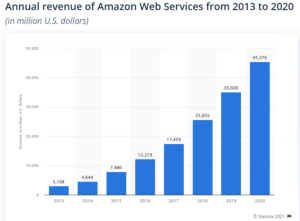
Why AWS Keeps It Simple

Before re:Invent, speculation was rampant that AWS would finally go up the stack and start developing more advanced industry- and process-specific applications. For the most part, that didn’t happen, and during his keynote, CTO Werner Vogels explained why the company prefers to keep things basic.
A lot has changed since Amazon Web Services made its debut back in 2006, starting with its first offering, Amazon Simple Storage Service (S3). AWS followed that up with Amazon Simple Queue Service (SQS) and Elastic Compute Cloud (EC2), and those three products are still at the foundation of its enormous public cloud offering today.
By the time AWS held its first re:Invent in 2012, the company had launched over a dozen services, including the Hadoop-like Amazon SimpleDB in 2007 and Amazon Elastic Block Store (EBS) in 2008. In 2009, it launched a more sophisticated Hadoop offering called Elastic MapReduce (EMR), as well as Amazon Relational Database Service (RDS) and Virtual Private Cloud (VPC). AWS CloudFormation followed in 2010, with AWS Elastic Beanstalk launched in 2011.
2012 was a big year for AWS, not just due to the inaugural re:Invent (always headquartered at The Venetian hotel and casino in Las Vegas), but also because of the introductions of core services like AWS Identity and Access Management (IAM) for EC2, Amazon DynamoDB, Amazon Glacier, and Amazon Redshift.
Over the years, AWS has introduced dozens of data and IT services, many of which see the first public light of day at re:Invent. The 2021 show, which concluded a week and a half ago, featured a slew of announcements, such as a mainframe modernization service, serverless versions of its data warehousing, streaming data, and hosted Hadoop service, enhancements to its data lake and machine learning tooling, and much more. (Surprisingly, there was no new database service, which could be a first for re:Invent.)
But besides the lack of a new database service, the 2021 version of re:Invent was missing something that many were expecting: vertical and horizontal applications. After delivering hundreds of services, runtimes, and tools over the years, it was time that AWS started delivering more pre-integrated solutions that didn’t require builders to put them together before they could be used, some industry watchers said.
Some of this speculation was fueled by new AWS CEO Adam Selipsky, who stated in a Fast Company magazine interview that AWS had to “dramatically improve the ease of use” and “come up with more abstractions” and “higher-level services, like our call center solution, Amazon Connect.” He also said that AWS had to “find other areas where there are horizontal or industry vertical solutions that our customers are demanding that operate at a higher level.”
If that’s still the plan, then it’s apparently still in the planning stages, because the 2021 re:Invent generally did not reflect those aspirations. AWS is an extremely capable company full of bright developers, and it keeps a tight lid on what it’s working on, for the most part. There is nothing holding the company back from delivering more pre-integrated vertical and horizontal solutions in the future.
As company executives said at the recent show, AWS is an “and” company–as in, it doesn’t need to remove something from the lineup or skip something to deliver something new. And it’s relentlessly driven by what its customers tell it they want, the execs said. According to CTO Vogels, that customer focus is why AWS currently has an astounding collection of more than 200 services.
“All complex machines start from simple machines,” the Netherlands-born technologist said during his two-hour keynote on December 2. “If you use some of these components, you start building more compound machines.”
With a screw, a lever, and a wheel–all simple machines–one can easily build a wheelbarrow, which is a more complex machine, Vogels said. “But still, these compound machines are built out of simpler machines, and that’s the reason why they work. And this is also the principle that we’ve used from day one at AWS. We give you primitives, not frameworks,” he said.

The 200+ services offered by AWS can be overwhelming, Vogels said during his re:Invent keynote December 2, 2021
That focus on delivering primitives as opposed to frameworks is the key to remaining responsive to customer demands, Vogels said.
“If you had to build a framework, then it would probably take…four to five years before you have everything together in the kitchen sink,” he said. “That means, by the time you deliver it to your customers, it’s already five years old. And now you have to build that for something that has to last 10 years. It doesn’t really work like that. What we wanted to do in the cloud is give you these small primitive components, so you can build exactly what you want to build without us telling you how to build it.”
If you’re intimidated by the sheer number and variety of services that AWS offers, you’re not alone. Vogels himself marveled at the fact that AWS exposes more than 200 services to its customers–not to mention more than 400 types of compute instances (although many of those will go by the wayside thanks to serverless offerings, AWS execs tell Datanami).
“You have always asked us for of these simple machines, more of these components, purpose built databases, for example, which means that by now we have well over 200 of these simple machines, of these services,” Vogels said. “And believe me, I know it’s sometimes overwhelming. But remember, you have asked for this. It’s basically your fault.”
Related Items:
AWS re:Invents the In-Person Conference
AWS Rocks with New Analytics, AI Services at re:Invent
All Eyes on New AWS Boss Selipsky as re:Invent Kicks Off



























